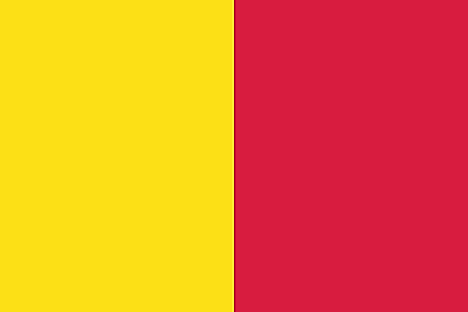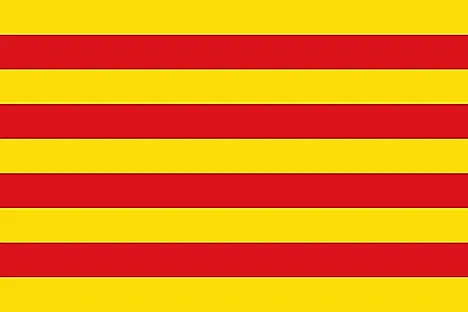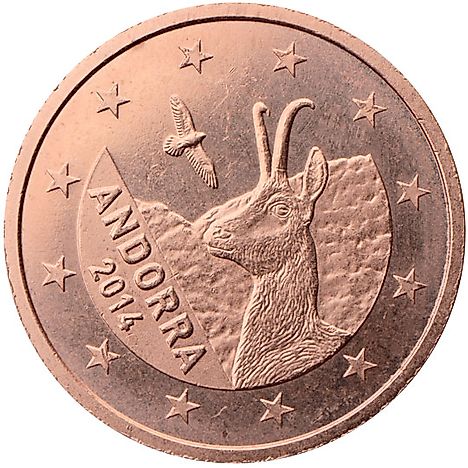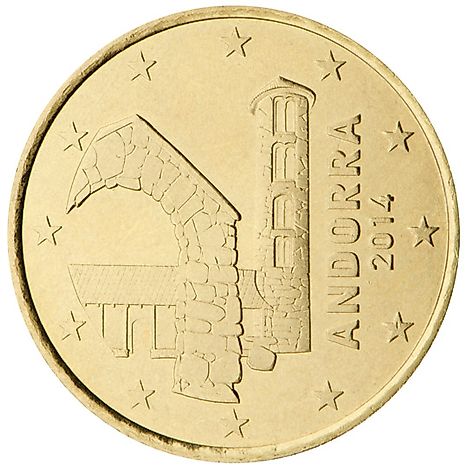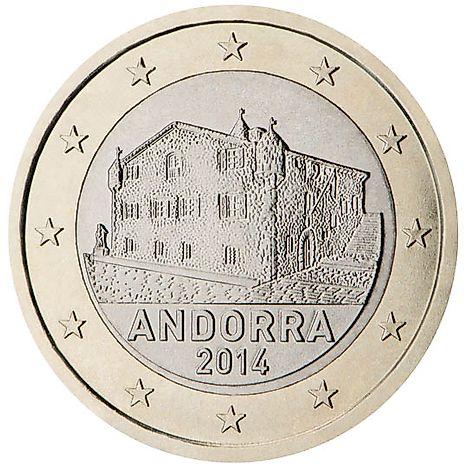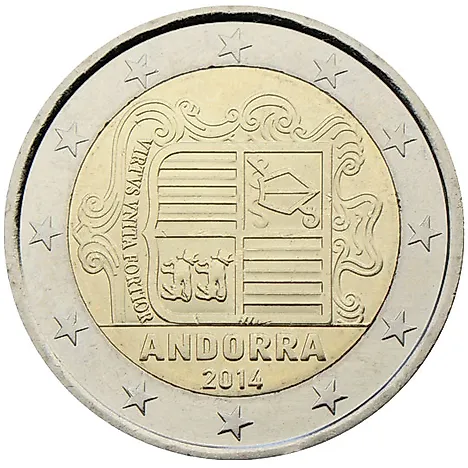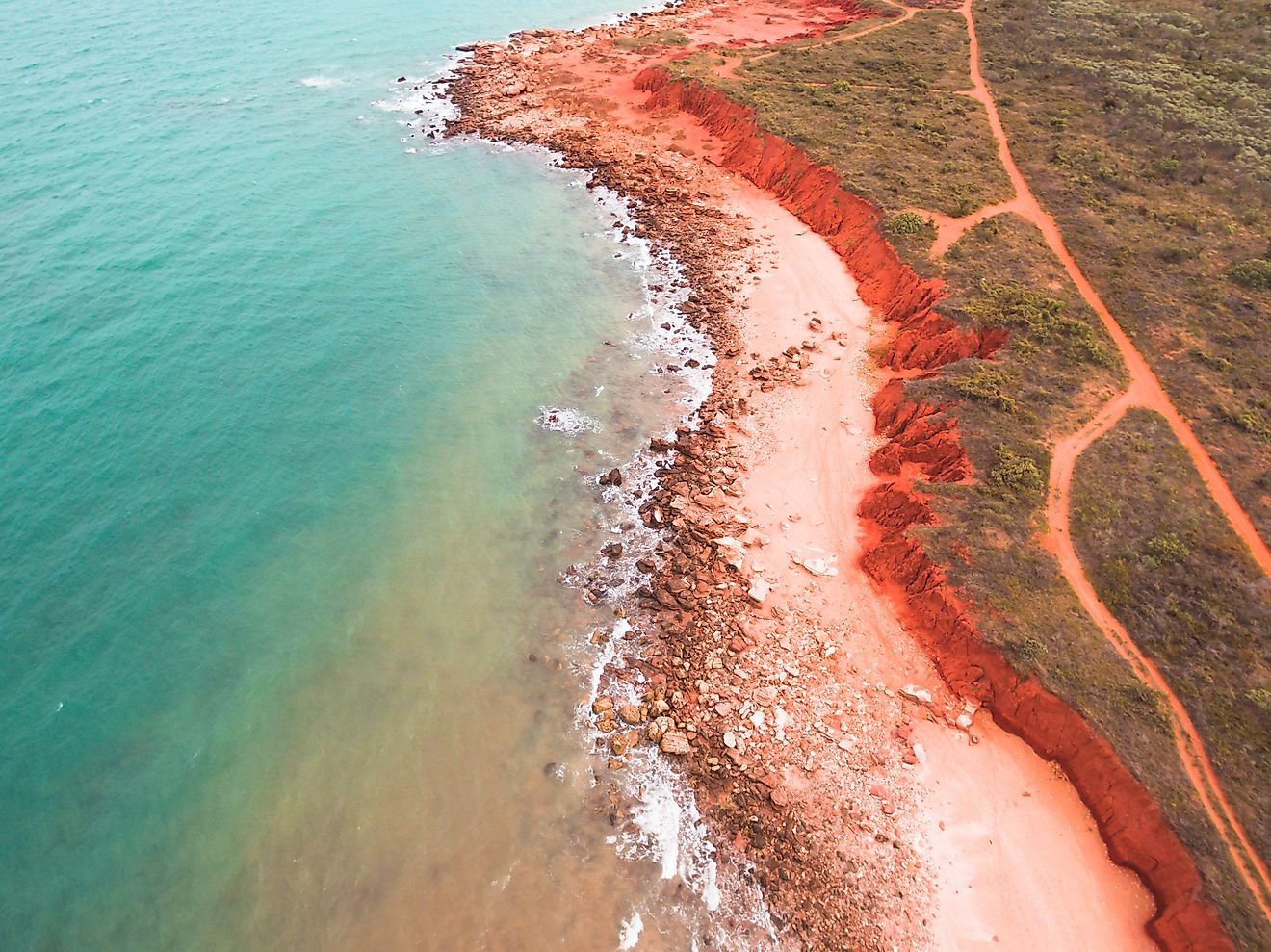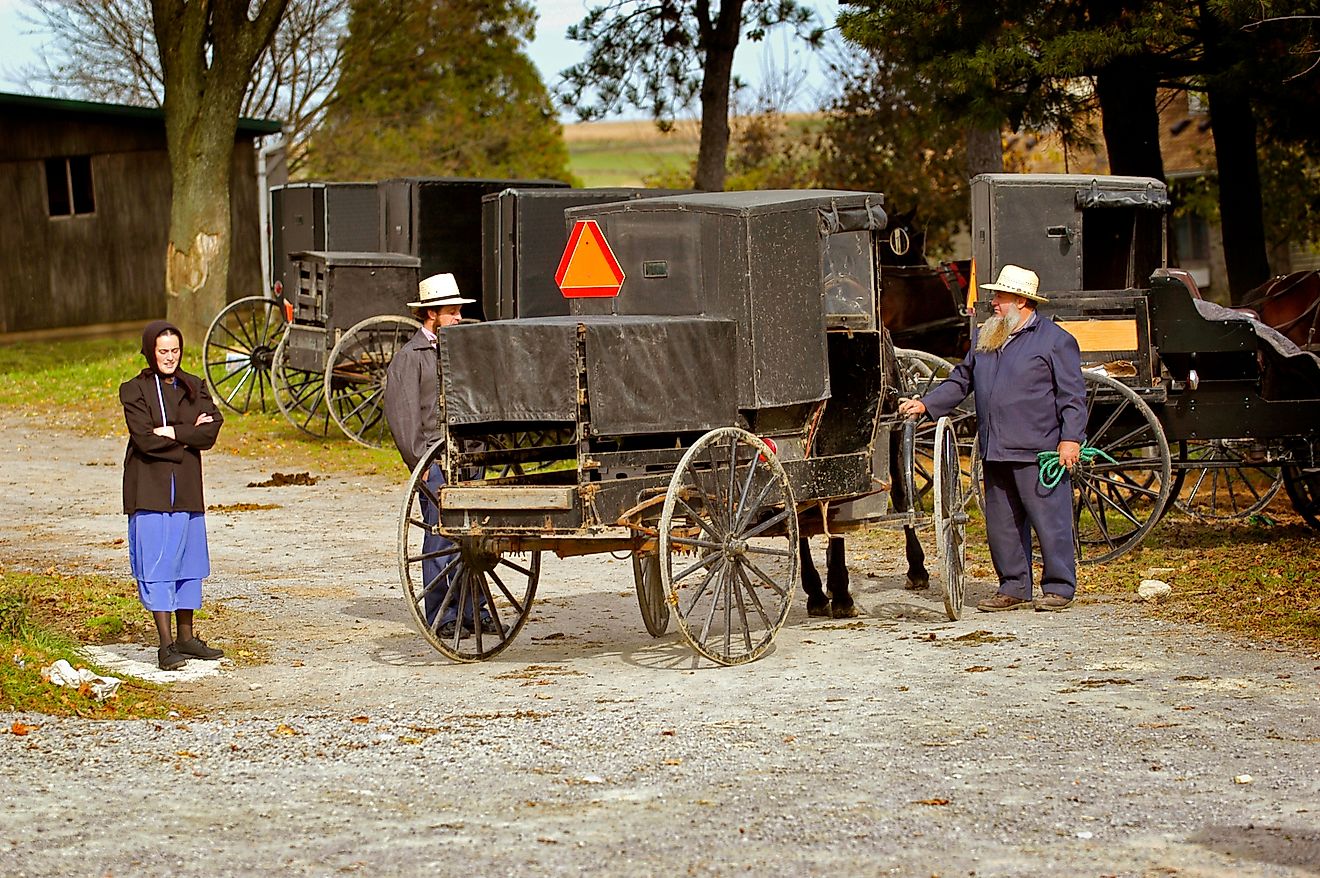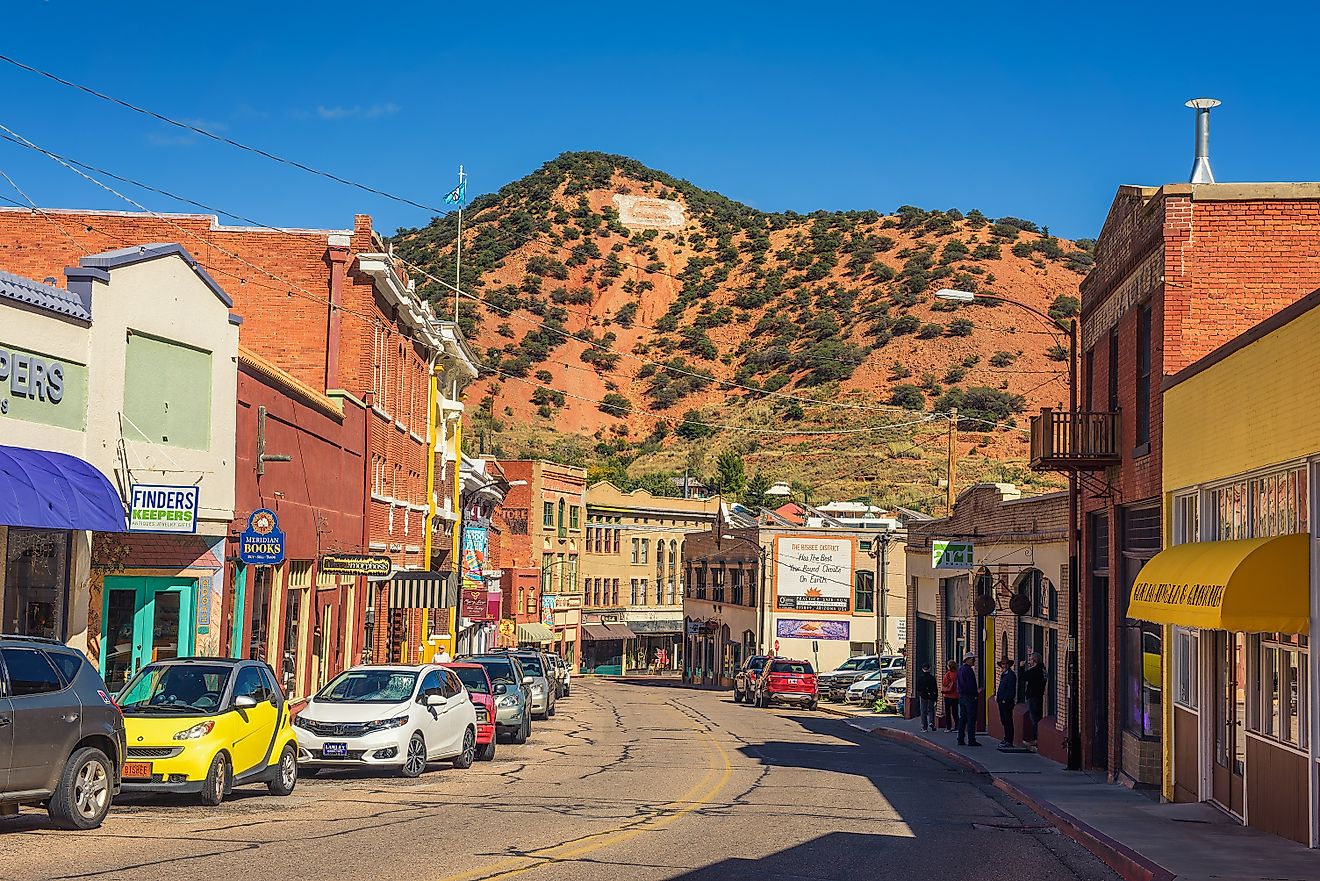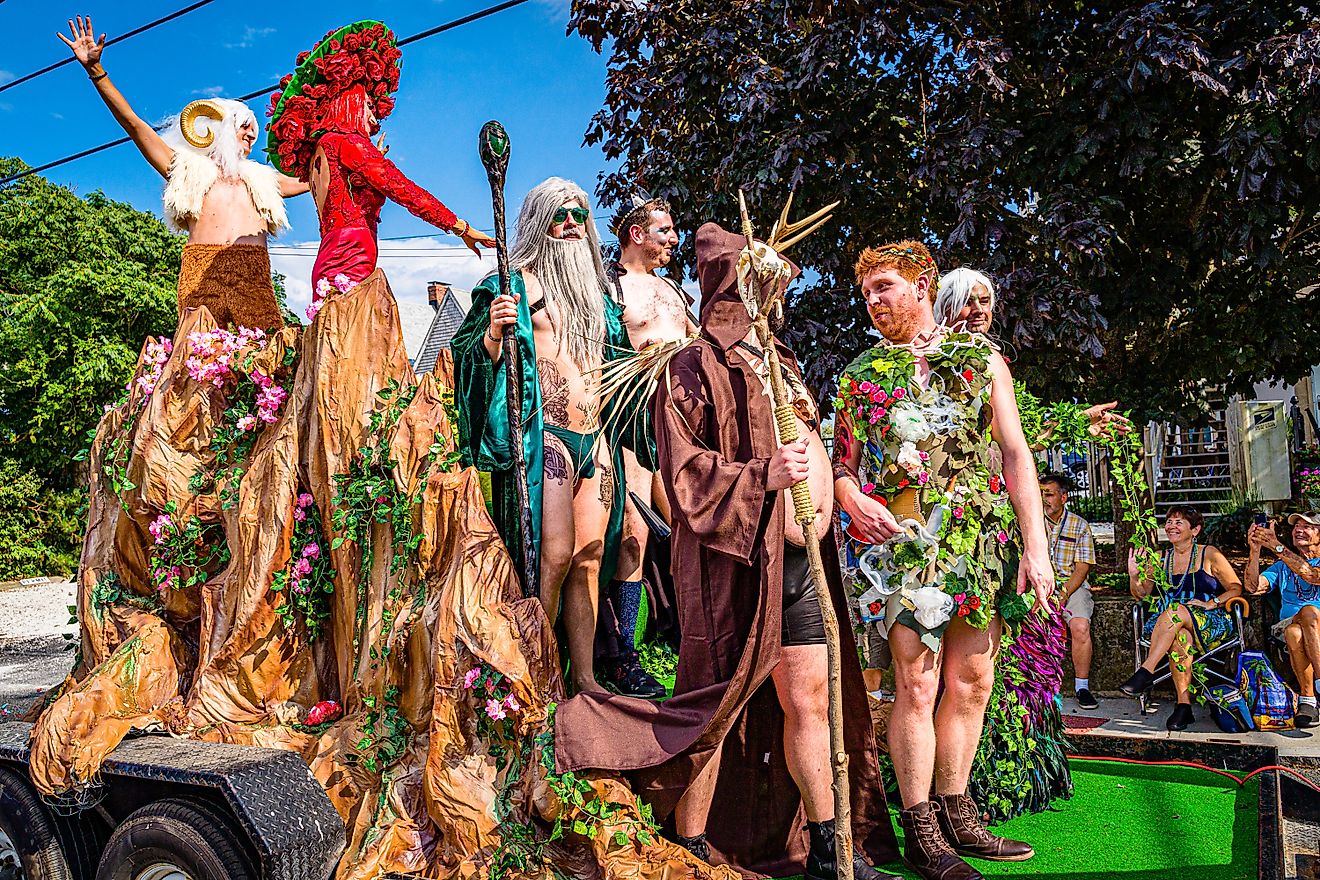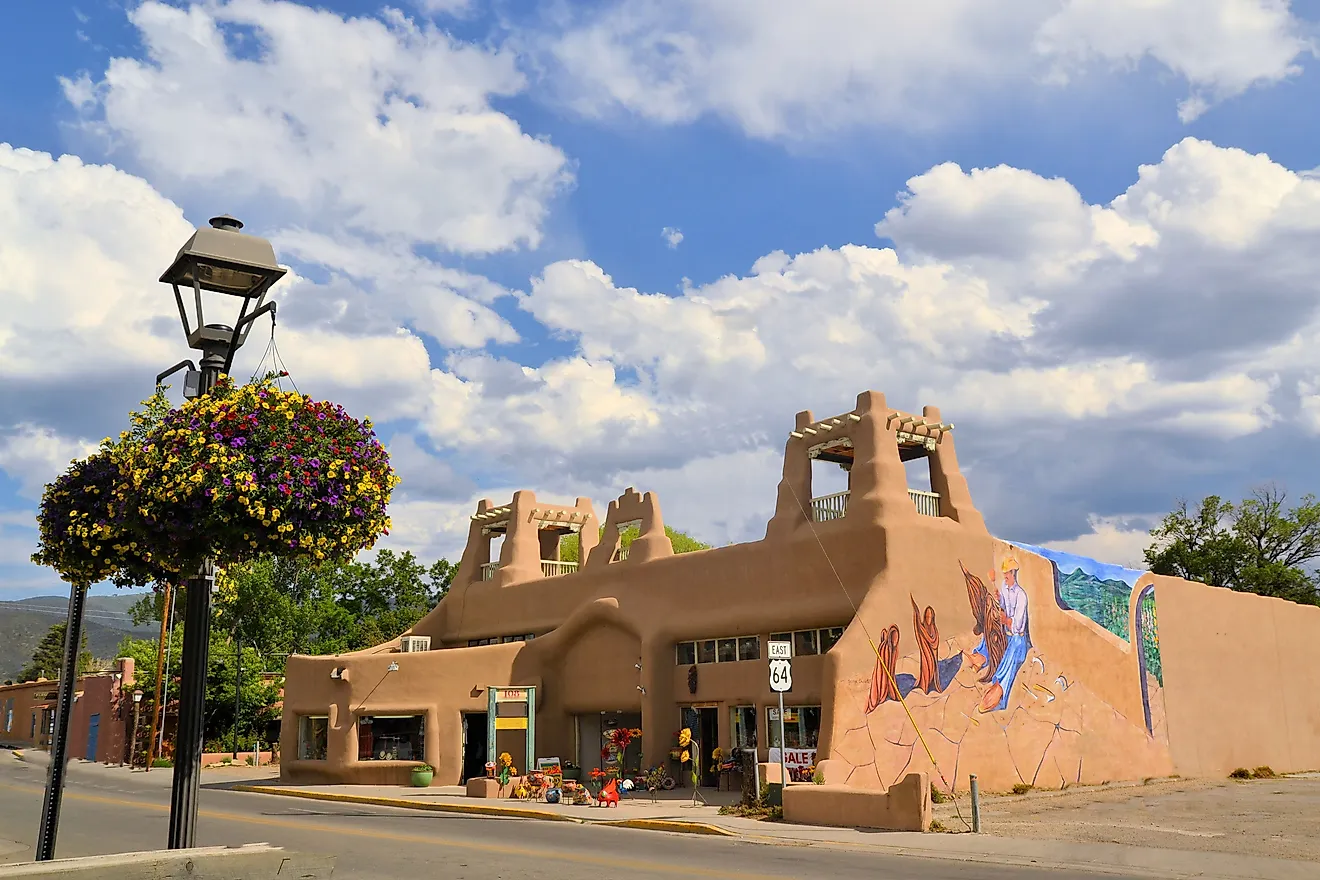Flags, Symbols & Currency of Andorra
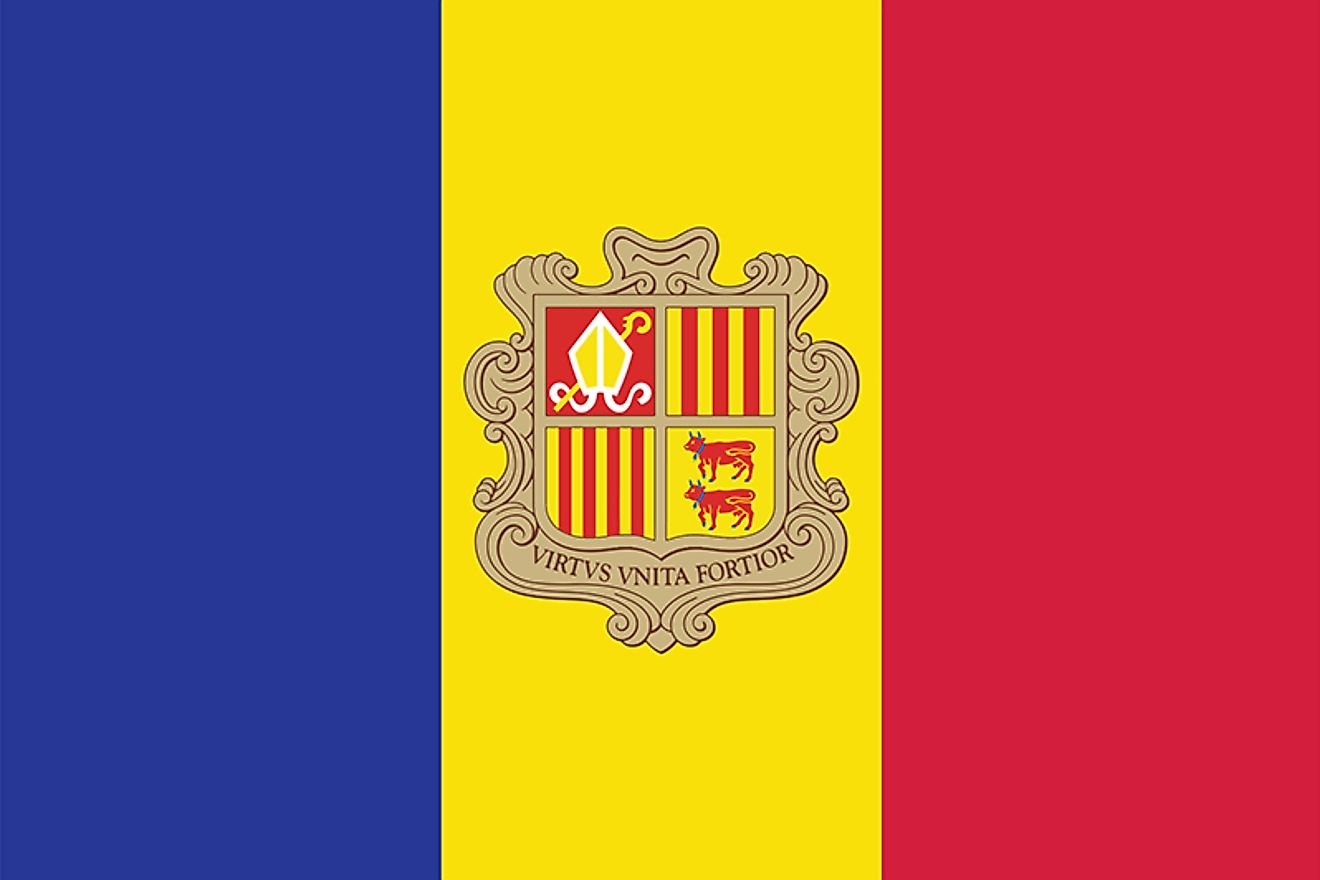
The Andorra flag was officially adopted in 1866 and standardized in July 1993 when they joined the United Nations. The flag features three equal vertical bands of blue, yellow, and red with the national coat of arms centered in the yellow band. Those colors are said to represent Andorra's independence from both France and Spain, with blue and red from France, and the red and yellow from Spain. The official width ratio of the three stripes is 8:9:8 for the blue, yellow, and red stripes, respectively with a horizontal rectangle design with a length-width ratio of 10:7. This design is popular around the world, and resembles that of three other countries: Chad, Romania, and Moldova.
Centered on the yellow stripe is the principality’s coat of arms. Thee coat of arms features a quartered shield with the emblems of (starting in the upper left and proceeding clockwise): Urgell, Foix, Bearn, and Catalonia with a motto that reads VIRTUS UNITA FORTIOR (Strength United is Stronger) underneath.
Symbols of Andorra
Coat of Arms

Andorra adopted its official coat of arms in 1993, in line with the adoption of a new constitution, but it had existed in Andorra since the Middle-Ages. The coat of arms is made up of a shield comprised of four equally-sized segments. The top-left segment features a red field on which a miter is centered, which supports a yellow staff that runs diagonally. The top-right section features a yellow field, on which three red vertical stripes of equal size run. The bottom-left section also features a yellow field, but with four equally-sized vertical red stripes. The bottom-right segment features two red cows, each with blue horns and hooves and a bluebell tied on the neck. The red cows are centered on a yellow field. At the bottom of the escutcheon is the Latin inscription, “Virtus Unita fortiori.” There exists another official variation of the court of arms, that of the High Authorities, which is held by the co-princes of the principality (The Bishop of Urgell and the president of France). This variation features a crown above the shield, which is surrounded by a vine with golden leaves and a tri-colored ribbon which bears the Latin inscription “Virtus Unita fortiori.”
National Motto
The national motto of Andorra is written at the bottom of the emblem in Latin, which in English translates to “united virtue is stronger.” The top-left arm that bears the religious staff and headgear represents the Bishop of Urgell, who is a co-prince of the principality and the head of government. The top-left arm that features three red vertical strips on a yellow field represents the Count of Foix, historically another co-prince of Andorra, and currently the president of France. The bottom-left arm that features four red strips running vertically on a yellow field represents Catalonia, which was traditionally been an ally of the principality. The final arm, the two cows set upon a yellow field, represents the Viscount of Bearn, another traditional ally of Andorra.
National Anthem
- Anthem Title: El Gran Carlemany (The Great Charlemagne)
- Composer: Enric Marfany Bons
- Lyricist: Juan Benlloch y Vivó
- Date of Adoption: September 8, 1921
The national anthem of the Principality of Andorra is El Gran Carlemany ("The Great Charlemagne" in English). Juan Benlloch y Vivó, a former Bishop of Urgell and ex officio of the Co-Prince of Andorra, penned the lyrics (which were written in a first-person point of view), with Enric Marfany Bons, a priest composing the music. The national anthem was officially adopted on September 8th 1921, which also commemorated Andorra's national day. The lyrics to the anthem mention vital events in the culture and history of Andorra, including the Carolingian Empire's heritage. On the same day that the anthem was officially adopted, it was sung at Andorra's cathedral for the first time during the country's National Day. Incidentally, the feast day of Our Lady of Meritxell falls on September 8th, Andorra's patron saint who was included in the lyrics. The lyrics of El Gran Carlemany are narrated in a first-person point of view and showcase a brief account of the history of Andorra. It mentions a traditional legend in Andorra about how Charlemagne managed to re-conquer Andorra from Moors during 788 to 790, after Catalan people guided him and his army through the rough valleys. In return, Charlemagne granted independence to Andorra, with the first borders of the country being defined. As a result, a part of Marca Hispanica, a buffer zone created by Charlemagne to protect his estate, the Carolingian Empire, formed. Legends say, Charlemagne was responsible for rebuilding the country of Andorra and introducing its people to Christianity once more. He also took charge of looking over the construction of numerous monasteries. Due to all of his deeds, he is recognized as the Andorra's founder and had a "mythical aura". The beginning of the anthem's lyrics, "El gran Carlemany mon pare", which translates to, "Great Charlemagne, my father" immortalizes the people's view of Charlemagne as an important entity in the rebuilding of the country.
El Gran Carlemany (Catalan)
El gran Carlemany, mon pare,
dels alarbs em deslliurà,
I del cel vida em donà,
de Meritxell, la gran Mare.
Princesa nasquí i Pubilla
entre dues nacions, neutral;
sols resto l'única filla,
de l'imperi Carlemany.
Creient i lliure onze segles,
creient i lliure vull ser.
Siguin els furs mos tutors
i mos Prínceps defensors!
I mos Prínceps defensors!
The Great Charlemagne
The great Charlemagne, my father,
from the Saracens liberated me
And from heaven he gave me life,
of Meritxell, the great Mother.
Princess, born Heiress
Into two nations, in neutrality;
I am the only remaining daughter,
of the Carolingian empire.
Faithful and free for eleven centuries,
Faithful and free I will be.
The laws of the land be my tutors,
and my Princes defenders!
And my Princes defenders!
The Currency of Andorra is the Euro
The European Union and Andorra reached an agreement that was signed on June 2011 and was effected on April 1st, 2012, with the EU officially allowing Andorra to use the Euro as its official currency and given the permission to mint up to 2.4 million distinct euro coins. All the coins feature the 12 stars of the European flag.
Historical Currencies
Before the country’s adoption of the euro, Andorra did not have any official currency. However, due to the microstate’s close proximity to France and Spain, Andorra used these countries’ respective official currencies; the Spanish peseta as well as the French franc.
The Andorran Peseta
Introduced in 1936, the Spanish peseta was one of the two official currencies circulating in Andorra. It was known in the financial markets as the Andorran Peseta and abbreviated as ADP. Despite the Andorran Peseta’s recognition in international money markets, Andorra did not mint its variation of the peseta and relied completely on the currency issued by the Central Bank of Spain, The Banco de Espania. The Andorra Peseta also featured the subdivisions of the peseta, the centim, where 100 centims made up one Andorra Peseta. Spain ceased the issue of the peseta in 2001 after the adoption of the euro in 1999. However, the banknotes of the peseta were used in Andorra until 2002 when Andorra officially adopted the use of the euro.
The Andorran Franc
The French franc was used as the official currency in Andorra since its introduction in the early 20th century. While in circulation in Andorra, the franc was officially referred to as the Andorran Franc and was abbreviated as ADF or FF in the international money markets. It was also known by several nicknames including “balle,” “patate,” “brique,” “baton” and the “plaque.” Despite the Andorran Franc being recognized as a distinct currency in the international money markets, Andorra did not mint its currency and relied wholly on the currency issued by the Central Bank of France. In the late 20th century, France and many other European countries established a common monetary union and ceased using the franc as the official currency, adopting the European Euro instead. However, the Andorran Franc continued in circulation in Andorra until 2002 when the microstate introduced the euro as the official currency.
